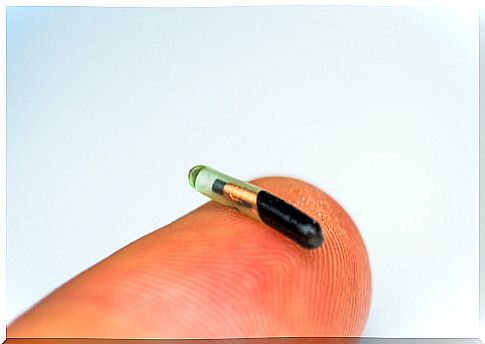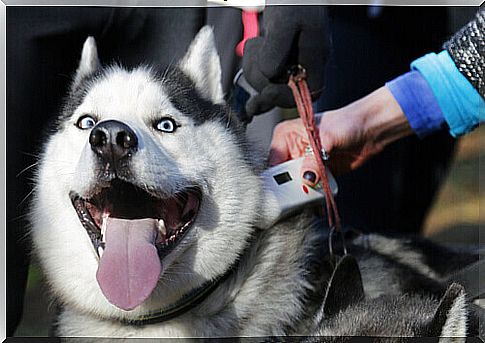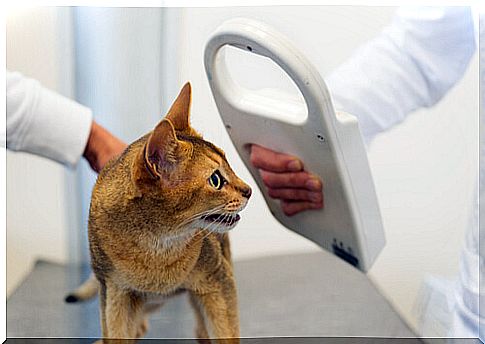Microchipping: How Does It Benefit Pets?

Microchipping is a different and effective option when it comes to identifying our pets. It is an alternative to the most common methods, such as necklaces, metal plates or the GPS locator among others.
One concern on the minds of pet guardians is what would happen if it was lost or stolen. In that case, and if for some reason the identification collar is lost, it would not be easy to recover the animal.
This is one of the reasons why microchipping was devised: it is an easy, inexpensive, permanent and useful way to identify our pets.
What is microchipping?
Microchipping consists of the electronic identification of our pets through the use of, worth redundancy, a microchip. This small electronic device is inserted into the skin of the animal at the dermal level, hence its subcutaneous nature.
The microchip constitutes the animal’s DNI, a unique alphanumeric number. Thus, the animal will be identified in any possible circumstance.
Regarding its size, it is similar to that of a grain of rice about 1.12 centimeters in length, to get an idea. In itself, the microchip is a passive RFID device containing an electric microcircuit without batteries. In this way, the small electronic element is activated when a reader is passed over the area. The reader’s scanner activates the microchip, and it transmits the animal’s identification number.

What are the benefits of microchipping?
Although it may seem that microchipping has negative effects on our pets, this is not the case. Some of the advantages of using the microchip are going to be mentioned below:
Its permanent
The microchip is a device that is inactive until exposed to a specific RFID reader. For this reason, it is totally safe for the animal and is only implanted once in its life.
It is a painless process
The implantation of the microchip is carried out using a needle slightly larger than that of an injection. In itself, the procedure does not hurt more than any veterinary process, such as a vaccine.
In addition, no surgery or anesthesia is needed, or further preparations. However, it is true that you can take advantage of the fact that the pet is anesthetized by some other process, such as sterilization.
The microchip contains an identification code
The microchip itself is an alphanumeric code associated with a database. The database collects information about the animal, such as its name, its data and those of its guardians.
This way, in the event that the pet is lost or stolen, it is possible to quickly confirm who the real guardian is. Faced with a lost animal, both veterinarians and SEPRONA will be able to access your data, being able to return it to your home as soon as possible.
Legal recognition of power
In addition, the microchip is considered a system of legal recognition of the power of the animal. Likewise, it also helps to avoid the abandonment of pets, since there are very severe penalties in this regard.
An Affinity study shows that the microchip has reduced the drop-out rate. About 61% of the microchipped dogs collected by protectors were returned to their original guardians.
Microchipping is inexpensive
This identification mechanism is around 15 euros and its price does not exceed 40 euros. The useful life of the microchip exceeds 20 years, which is why it is considered a good value for money.

Possible questions about microchipping
Does the microchip replace identification collars?
The microchip itself is not a substitute for identification collars. Typically, the collar contains visible information that is more easily accessible.
On the collar, both the pet’s name and some contact information, be it an address or a phone number, appears. On the other hand, the microchip ID is associated with a database that contains more information.
Is microchipping really necessary as an identification method?
In Spain it was established as mandatory to identify dogs with a microchip. This law was approved in 2003, although the deadline to carry it out is established by each Autonomous Community.
There are another series of alternatives to identify our pets. Among them is the option of a permanent tattoo with the corresponding alphanumeric code, although this is more invasive for the animal.
Does the microchip have a GPS device integrated?
No, the microchip only stores our pet’s ID and, in some cases, confidential medical information. The ID is associated in a database with information regarding the guardians of the animal.
Ultimately, it can be concluded that microchipping is a good identification system for pets. In Spain, there is an obligation to identify them using microchipping or permanent tattooing.
It is also a great alternative to avoid circumstances such as the abandonment of animals. Some studies have shown that the application of the microchip has reduced the dropout rate.









